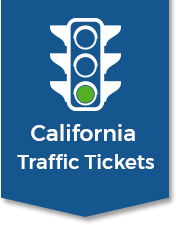Driving Without a License in California
Have you been caught for driving without a license in California?
In California, getting caught driving without a license is a misdemeanor charge, which is a very serious criminal charge remaining on your criminal history report for 10 years. It also comes with possible jail time, high fine amounts, and may even interfere with immigration issues or re-entering the US.
Our locally contracted traffic tickets lawyers can help win your charge by dismissing the misdemeanor or reducing the charge down to an infraction with an 80%+ success rate. Here at CA Traffic Tickets, our contracted local lawyers will make all the court appearances for you and help you achieve the best possible result. Just like a speeding ticket, you should consider hiring a traffic lawyer to help you win your case.
Call 1-800-203-6606 for your free consultation today! Our traffic ticket attorneys have years of experience winning cases when it comes to a driving without a license in California penalty.
A Major California Safety Problem.
Raymond C. Peck
How many drivers are driving in California without a valid driver’s license? This question was the focus of a recent paper authored by the California Department of Motor Vehicles’ Research and Development Branch, which appeared in the January 1997 issue of the journal Accident Analysis and Prevention. The findings of the study are quite astounding: 8.8% of the drivers on the road during the periods and locations sampled had suspended or revoked licenses and another 3.3% had no record of any driver’s license.
The above estimates were based on an analysis of fatal accidents in California during the years 1987-1992 where one or more of the drivers were cited. Using a technique known as quasi-induced exposure, we calculated the proportion of nonculpable parties in 2-vehicle fatal crashes who were suspended, revoked or unlicensed. The rationale underlying the induced exposure technique is straightforward: The incidence of being the “innocent victim” in fatal accidents caused by other drivers is primarily a function of exposure-i.e., the number of miles driven by a group and their proportionate representation on the road during the time and place of accident occurrences.
Study Findings
The study also found that suspended/revoked and unlicensed drivers were much more likely to be the responsible party, as shown in the following figure.
These involvement ratios represent the ratio of each group’s culpable to non culpable accident rates (percentage at fault ÷ percentage not at fault). Clearly, the non licensed groups are much more likely to be responsible for fatal accidents than those with valid licenses. Taking 1992 as an illustration, suspended/revoked drivers have a culpable involvement index of 4.7 compared to an index of 0.60 for validly licensed drivers. Thus, suspended/revoked drivers are 7.8 (4.7 ÷ 0.6) times more likely to be the cause of a fatal accident than are drivers with valid licenses when both parties are involved in a fatal accident.
Although it is not possible to produce a volume estimate of the actual number of drivers who are driving with a suspended/revoked license or with no license, the results suggest that, during the time periods and locations of fatal accidents, roughly 12% (8.8% + 3.3%) of the drivers on the road do not have valid licenses. Perhaps even more significant is the high degree of culpability of unlicensed and suspended drivers in causing fatal accidents.
In California, slightly more than one million drivers are suspended/revoked at any point in time. The fatal accident data base did not contain information on the types of suspensions and revocations that were being violated. Therefore, in a subsequent survey, the Research and Development Branch checked the driver records of the suspended and revoked drivers in a fatal accident sample for the year 1993. A comparison of the percentage distribution of the accident sample and DMV file population by the reason for the suspension/revocation is shown in the table below.
Percentage Distribution of Suspended and Revoked Drivers
in Two-Vehicle Fatal Accidents By S/R Reason
Reason for license suspension/revocation | % of S/R population | Proportion of S/R fatal accidents | Relative risk
|
|---|---|---|---|
| Total | 100.0 | 100.0 | – |
| negligent operator | 4.2 | 10.2 | 2.44 |
| physical & mental | 4.2 | 4.0 | 0.95 |
| failure to appear | 42.0 | 32.6 | 0.78 |
| DUI related, including insurance proof | 31.5 | 37.3 | 1.18 |
| FR accident | 14.3 | 14.0 | 0.98 |
| other | 3.8 | 1.9 | 0.50 |
Note. The percentage of the file population and 2-vehicle fatal accident population who are suspended or revoked are, respectively, 5.2% and 14.0%.
Public Safety Risk
In terms of relative risk, drivers suspended and revoked for DUI or negligent driving have the highest overinvolvement indices. This finding is consistent with numerous previous research studies showing that repeat traffic offenders and convicted drunk or impaired drivers have much higher rates of accidents than do other groups. Although the negligent operator group has the highest relative risk index, the DUI group represents a much larger absolute public safety risk because of their population volume (31.5% vs. 4.2%). Several qualifications regarding application of the induced exposure method are discussed in the formal publication. However, even allowing for considerable error in the assumptions underlying the method, the central message is clear: many unlicensed and suspended and revoked drivers continue to drive and represent significant public safety risks. Better methods are needed for identifying and controlling unlicensed driving in California.
The complete paper appears in Accident Analysis and Prevention, 29(1), (“Estimating the exposure and fatal crash rates of suspended/revoked and unlicensed drivers in California,” authored by D. J. DeYoung, R. C. Peck, and C. J. Helander.)



